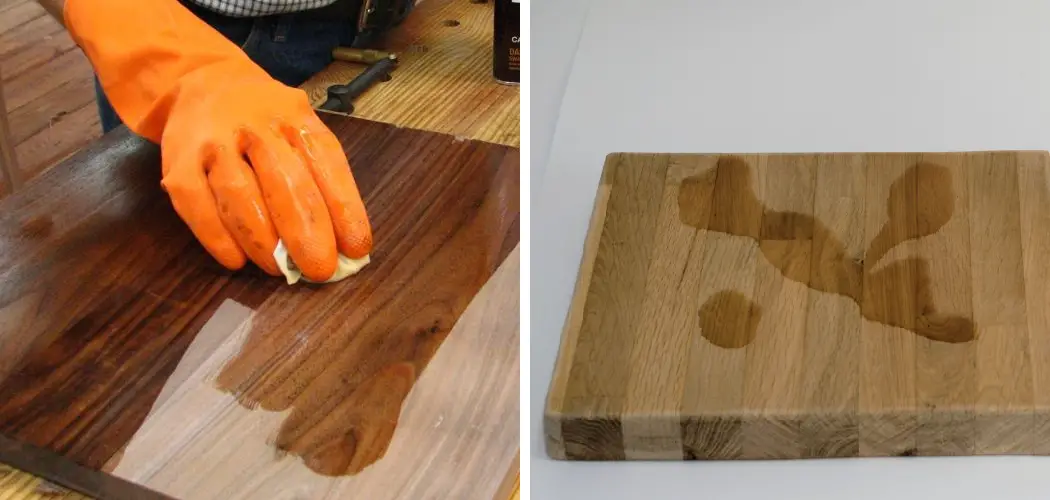Danish oil is a type of hardening oil used to treat wood. It penetrates deep into the wood grain to protect it from within and give it a beautiful, lustrous finish. However, sometimes, you may need or want to remove Danish oil from your wood surfaces. Whether you accidentally spilled some oil or you’re just ready for a change, follow these simple steps on how to remove danish oil from wood.
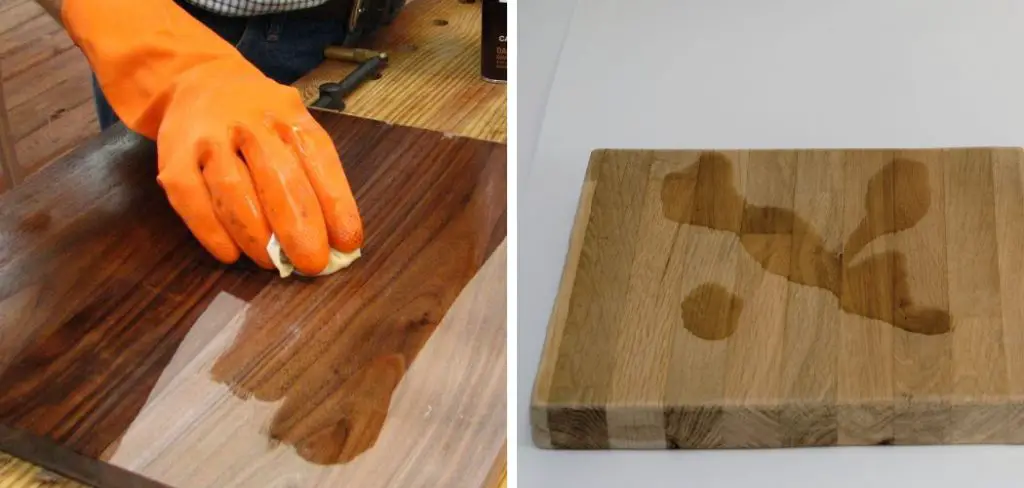
What Is a Danish Oil?
Danish oil is a type of wood finish penetrating deep into the wood grain, providing protection and a beautiful, lustrous sheen. Unlike other finishes, Danish oil does not sit on top of the wood surface; instead, it soaks in, becoming a part of the wood itself. Danish oil is ideal for use on projects that will see a lot of wear and tear, as it is more resistant to damage than other finishes.
In addition, Danish oil is very easy to apply; simply wipe it on with a cloth and let it dry. And because it dries quickly, you can usually apply multiple coats in one day. Danish oil is an excellent choice if you’re looking for protection or simply want to enhance the natural beauty of your woodworking project.
Why Should You Remove Danish Oil from Wood?
Danish oil is a type of wood finish that is often used on furniture and other wooden objects. It can give the wood an attractive sheen, and it can also protect the wood from scratches and other damage. However, Danish oil can also be difficult to remove if it gets onto your clothing or skin. Moreover, it can be toxic if it is inhaled or ingested.
For these reasons, it is important to take care when applying Danish oil to the wood and promptly remove any excess oil. If you get Danish oil on your clothing, skin, or eyes, flush the area with water for 15 minutes and then seek medical help. Taking these precautions can help ensure that Danish oil does not pose a health risk to you or your family.
What You’ll Need
Before you start, gather the following supplies:
Dish Soap
Dish soap is a great option for removing Danish oil from wood surfaces. It breaks down the oil, making it easier to remove.
Vinegar or Mineral Spirits
These two products can also be used to remove Danish oil from wood. They work in a similar way as dish soap, breaking down the oil and allowing it to be wiped away.
Rags or Paper Towels
You’ll need something to wipe away the oil, so have plenty of rags or paper towels on hand.
Scraper or Sandpaper
If the Danish oil has dried and hardened, you may need to use a scraper or sandpaper to remove it from the wood surface. Be sure to use a gentle touch to avoid damaging the wood.
How to Remove Danish Oil from Wood 11 Step-by-Step Guide
Step 1: Clean the Surface
Start by giving the surface a good cleaning with dish soap and water. This will help remove any surface dirt or grime that could prevent the Danish oil from being removed evenly. Then, allow the surface to dry completely before moving on to the next step. It is important to note that if the Danish oil has already dried, you may skip this step and move on to Step 3. You’ll need to use a scraper or sandpaper to remove the oil.
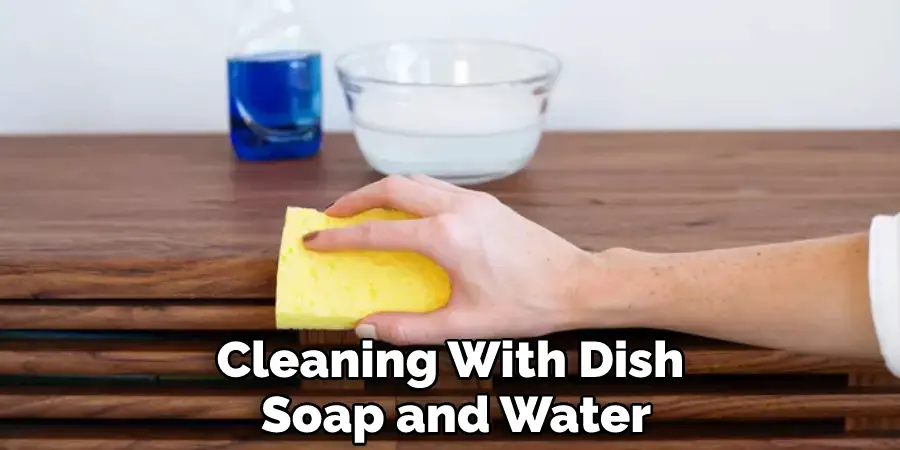
Step 2: Apply Vinegar
If you’re working with a small area, you can try using white vinegar to remove the Danish oil. Simply apply the vinegar to a sponge or cloth and Rub it into the affected area in a circular motion. Allow the vinegar to sit for 5-10 minutes before repeating Step 1. If the vinegar isn’t working, move on to Step 3. The vinegar can help break down the oil and make it easier to remove. You may need to repeat this step a few times depending on the amount of oil that needs to be removed.
Step 3: Sand Down the Surface
If you’re still not having any luck, you can try sanding down the surface with fine-grit sandpaper. Start with light pressure and increase as needed until you’ve removed all of the Danish oil. Be careful not to damage the wood surface beneath. Once you’re finished sanding, wipe down the area with a tack cloth or clean sponge to remove any residual dust. Allow the area to dry completely before continuing. If sanding doesn’t work or isn’t an option, move on to Step 4.
Step 4: Apply Mineral Spirits
Mineral spirits are a strong solvent that can effectively remove Danish oil without damaging the wood beneath. Pour a small number of mineral spirits onto a clean cloth and rub it into the affected area in a circular motion until all of the oil has been removed. You may need to apply more mineral spirits as you go. Once you’re finished, wipe down the area with a tack cloth or damp sponge and let it dry completely. You may need to repeat this step a few times depending on the amount of oil that needs to be removed.
Step 5: Apply Paint Thinner
Paint thinner is another strong solvent that can be used to remove Danish oil from the wood. Simply apply the paint thinner to a clean cloth and rub it into the affected area in a circular motion until all of the oil has been removed. You may need to apply more paint thinner as you go. Once finished, wipe down the area with a tack cloth or damp sponge and let it dry completely. You may need to repeat this step a few times depending on the amount of oil that needs to be removed.
Step 6: Apply Alcohol
If you’re out of other options, you can try using rubbing alcohol to remove Danish oil from the wood. Simply apply the rubbing alcohol to a clean cloth and rub it into the affected area in a circular motion until all of the oil has been removed. You may need to apply more alcohol as you go. Once you’re finished, wipe down the area with a tack cloth or damp sponge and let it dry completely. You may need to repeat this step a few times depending on the amount of oil that needs to be removed.
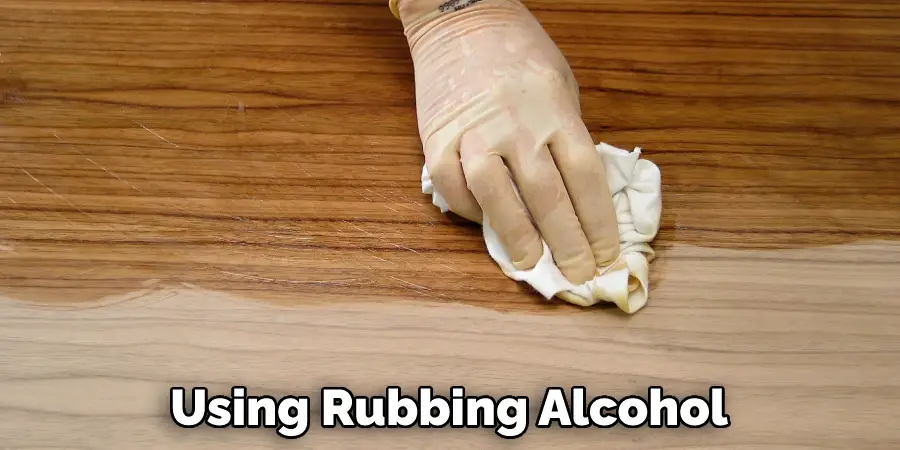
Step 7: Repeat as Needed
If any of the above steps don’t work, you can try repeating them until the Danish oil is removed. You may also need to try a different method altogether. If you’re still having trouble, you can always contact a professional for help. Remember to always use caution when handling chemicals and solvents. The fumes can be harmful if inhaled and the products can irritate your skin. It is important to wear protective gloves and a mask if necessary.
Step 8: Clean Up
Once you’ve successfully removed the Danish oil, be sure to clean up any leftover residue. If needed, use a mild cleaner or soap and water to remove any remaining solvent from the wood surface. Then, wipe down the area with a clean cloth and allow it to dry completely. You may also want to buff the surface with a wood wax or polish to restore shine. Although the removal process can be time-consuming, it’s important to take your time and ensure that all of the oil is removed. This will prevent any issues in the future and help maintain the wood’s integrity.
Step 9: Dry Completely
Allow the wood surface to dry completely before applying any new finish or coating. This will ensure that the surface is clean and free of any residual oil or solvents. You may want to wait a full day before continuing with any additional steps. But if you’re in a hurry, you can use a hairdryer on the cool setting to speed up the drying process.
Step 10: Apply Protective Finish
To protect your wood surface from future damage, consider applying a protective finish such as polyurethane or varnish. This will help seal the wood and provide an extra layer of protection against spills, scratches, and other wear and tear. Follow the instructions on the product carefully and allow for proper drying time before using the surface. It’s also important to regularly maintain and reapply the protective finish as needed to keep your wood looking its best.
Step 11: Disposal of Materials Properly
Be sure to dispose of any used rags or paper towels properly, as they may still contain hazardous materials. Follow local guidelines for safe disposal methods. And finally, take a step back and admire your clean, oil-free wood surface! With the right techniques and materials, you can easily remove Danish oil from your wood and restore its natural beauty. Remember to always follow safety precautions and take your time for the best results.
That’s it! You’ve now learned how to remove danish oil from wood. Remember to take the necessary precautions and use the appropriate products to avoid damaging the wood. With a little bit of elbow grease, you should be able to get rid of that pesky Danish oil in no time!
How to Clean Danish Oil Off of Wood
Danish oil is a popular finish for wood, but it can be difficult to remove once it has been applied. The first step is to sand the surface of the wood with medium-grit sandpaper. This will help to create a smooth surface and remove any excess oil. Next, you will need to apply a solvent-based cleaner to the wood.
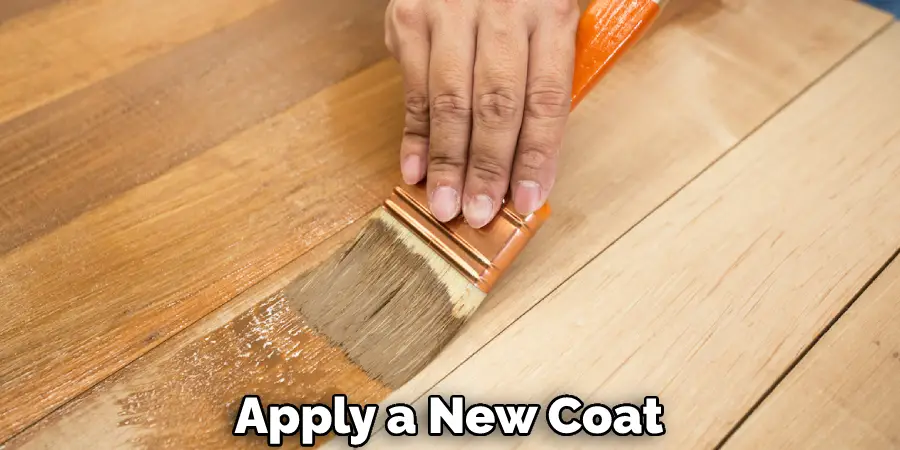
Be sure to follow the instructions on the cleaner, as some solvents can damage the wood if used improperly. Once the cleaner has had a chance to work, you can remove it with a rag or sponge. Finally, you will need to apply a new coat of Danish oil to protect the wood. With a little patience, you can easily clean Danish oil off of wood.
Removing Danish Oil from Wood Furniture
If you have wooden furniture coated with Danish oil, you may wonder how to remove it. Danish oil is a type of finishing oil that is typically used on woodwork and furniture. It is applied in thin coats and dries to a hard, glossy finish. Danish oil is also water-resistant, making it ideal for high-traffic areas. However, over time the finish can become dull or scratched, and you may want to remove it and start over. There are a few different ways to remove Danish oil from wood furniture.
One option is to use mineral spirits or a paint stripper. These products will dissolve the oil and allow you to wipe it away. However, they can also damage the wood if they are not used properly. Another option is to sand the furniture down with fine-grit sandpaper. This will remove the oil without harming the wood. Once the furniture is sanded, you can apply a new coat of Danish oil or another type of finish.
With a little bit of effort, you can easily remove Danish oil from wood furniture and give it a fresh new look. Keep reading for more information about how to remove danish oil from wood.
Can I Use Paint Thinner to Remove Danish Oil from Wood?
Danish oil is a type of wood finish that is often used on countertops and cutting boards. It is made from a mixture of oil and varnish, and it can provide a durable and attractive finish. However, paint thinner can be an effective option if you need to remove Danish oil from the wood. Danish oil is designed to penetrate the wood, so paint thinner can help break down the finish and make it easier to remove.
Simply apply the paint thinner to a clean cloth and rub it onto the surface of the wood. You may need to repeat this process several times before the Danish oil is completely removed. Once the oil is gone, you can sand the wood and apply a new finish if desired.
Can You Remove Danish Oil from Wood with Mineral Spirits?
Oil-based finishes, such as Danish oil, are popular for wood furniture and floors because they provide a hard, durable surface that is easy to clean. However, because these finishes are oil-based, they can be difficult to remove once they have been applied. One common method for removing Danish oil from the wood is to use mineral spirits. Mineral spirits are a type of petroleum distillate that can dissolve oil-based finishes.
To remove Danish oil with mineral spirits, simply apply a generous amount of the solution to a clean cloth and rub it into the wood in a circular motion. After the finish has been dissolved, wipe away any excess with a dry cloth. With this method, you should be able to remove Danish oil from your wood surfaces easily.
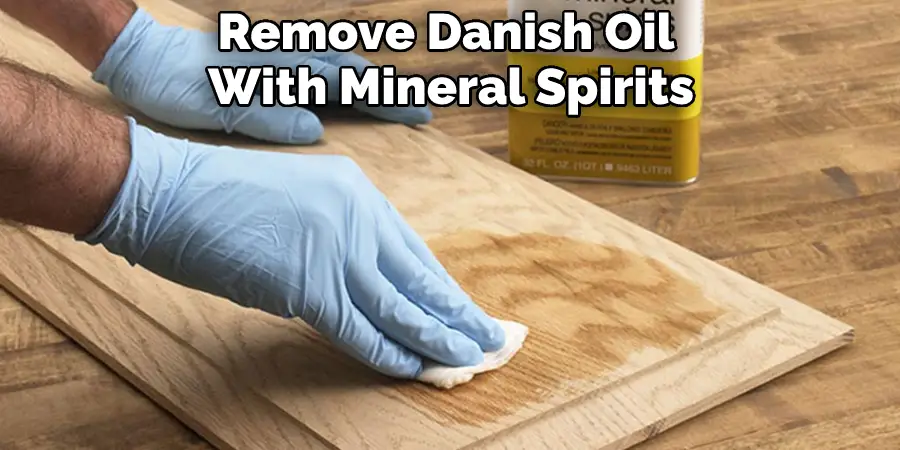
Frequently Asked Questions:
Q: How Should I Prepare My Wood Surface Before Removing Danish Oil?
A: Before attempting to remove Danish oil, make sure your wood surface is clean and free of any debris or dust. Sanding the surface with medium-grit sandpaper can help create a smooth surface for better results. You should also have all necessary cleaning supplies and protective equipment ready before beginning the process.
Q: Can I Use a Pressure Washer to Remove Danish Oil From My Wood Deck?
A: No, it is not recommended to use a pressure washer to remove Danish oil from wood. The high pressure can damage the wood and potentially create an uneven surface. It’s best to use gentle cleaning methods and take your time for the best results.
Q: How Often Should I Reapply Danish Oil To My Wood?
A: It is generally recommended to reapply Danish oil every 1-2 years, depending on the amount of wear and tear on the wood surface. However, it’s always a good idea to regularly clean and maintain your wood surfaces to keep them looking their best.
Q: Can I Use Any Type of Cloth or Sponge to Apply Solvent-Based Cleaner?
A: It is best to use a lint-free cloth or sponge when applying solvent-based cleaner to your wood surface. This will help prevent any fibers or debris from getting stuck in the finish and causing damage. Avoid using abrasive materials such as steel wool, which can scratch the wood.
Q: Is It Necessary to Wear Protective Gear When Working with Solvent-Based Cleaners?
A: Yes, it is important to wear protective gear such as gloves and safety glasses when working with solvent-based cleaners. These products can be harmful if they come into contact with your skin or eyes, so it’s better to err on the side of caution. Make sure to also work in a well-ventilated area to avoid inhaling any fumes.
Conclusion
There are several ways that you can remove Danish oil from wood surfaces. Try using white vinegar first, followed by sanding if necessary. If those methods don’t work, use mineral spirits as a last resort. Whatever method you choose, be sure to work slowly and carefully to avoid damaging your wood surfaces. Thanks for reading our post about how to remove danish oil from wood.
You Can Check It Out to Remove Murphy’s Oil Soap From Hardwood Floors

